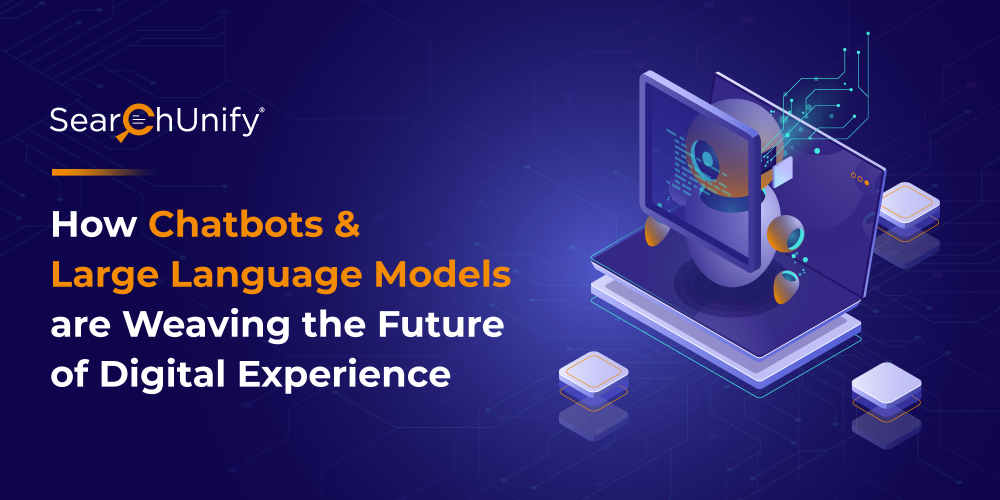
Did you know the global artificial intelligence market size was valued at $136.55 billion in 2022? And a whopping 70% of organizations are currently testing the waters with Generative AI!
Since the advent and overnight stardom of ChatGPT, many organizations have decided to take a deeper dive into the world of AI. ChatGPT is an AI language model that uses the GPT-3.5 architecture, commonly referred to as a large language model (LLM).
LLMs can process large amounts of text and learn the patterns of human languages, such as the relationships between words and phrases. This enables them to generate human-like responses to natural language queries.
There is a lot of scope for advancements in the LLM world. For instance, four months after the launch of GPT-3.5-powered ChatGPT, GPT-4 was partially released to the public in ChatGPT Plus, along with access to the GPT-4 based version of OpenAI’s API being provided via a waitlist.
These rapid advancements have rekindled innovation in the chatbot sector. Every business leader is envisioning to automate workflows by leveraging an LLM-powered chatbot.
While all of that may seem intriguing and overwhelming at the same time, there’s a lot more to LLMs and chatbots than meets the eye. Let’s see how.
How LLMs are Trained
You may have read about how LLMs are trained on data available on the internet. However, a lot more happens on the backend.
LLMs are coached using a technique known as pre-training. It is divided into two parts, as follows:
Unsupervised Pre-training
As a part of pre-training, the model is trained on a large dataset through unsupervised or self-supervised learning. During this training period, the model processes a large corpus of data to understand language patterns and lexical semantics to predict missing words or sentences.
Understanding the complexity of human language helps make the language model easier to fine-tune for performing specific tasks, such as text summarization or question answering.
Pre-training has been proven to improve NLP performance across tasks.
Supervised Fine-tuning
While pre-training covers a wide variety of topics and is pretty generic, the fine-tuning process involves adapting a pre-trained language model to specific domains by training it on task-specific data. During fine-tuning, the LLM is trained on a smaller dataset that fits the specific task you want it to perfect.
This is done using supervised learning algorithms that introduce the model to input-output pairs. For instance, let’s say the input sequence is “What color is the sky?” The output sequence can simply be “blue.” Alternatively, it can be trained to provide a more descriptive response.
By the end of this process, you should have a unique LLM that fits right into and caters to your organization’s specific needs.
Use Cases of Chatbots Trained on LLMs
Due to LLMs’ abilities to be trained to perform specific tasks, chatbots trained on them can be deployed across various departments.
Some common use cases of LLM-based chatbots are:
Sales and Marketing
We’ve already established that LLMs can analyze large amounts of data to generate contextually correct responses. Therefore, a chatbot trained on LLMs can offer many benefits for sales and marketing, such as:
- guiding and informing prospects about your product range
- providing personalized recommendations based on their specific requirements
- building customer profiles through data provided in the conversations to get a better understanding of the audience.
..and much more!
Content Marketing
An LLM-powered chatbot can generate unique, tailored, and high-quality text based on your marketing requirements. Further, it can keep in mind your target audience to:
- provide relevant and personalized content recommendations
- automate content distribution through emails, texts, etc., to increase the reach and visibility of your context
- collect quick and direct feedback from customers regarding the value of specific content pieces.
Not to forget, it can learn your internal workflows and suggest the best content marketing strategies.
Customer Support
LLM chatbots are capable of effortlessly handling conversations without human intervention. That’s quite impressive when we consider the cost of hiring live agents to cover all these interactions.
What’s more, LLM-powered chatbots go beyond just answering basic queries, and provide the following advantages:
- delivering consistent and accurate responses, ensuring uniformity in customer support experiences.
- providing answers to FAQs, and recommending relevant resources or self-help options, increasing case-deflection rates.
- increasing content findability and visibility to speed up the resolution process.
- fetching real-time information to keep customers updated on their order statuses.
- leveraging agent desktops to empower customer service agents with AI copilots, boosting their productivity through intelligent assistance and automation.
Social Media Marketing & Lead Generation
Chatbots that have a thorough knowledge of your internal operations can use that to provide you with the following functions:
- gathering user information to qualify leads
- tapping into social media conversations to identify engagement opportunities
- keeping your customers updated on the latest releases, events, deals, etc
Training and Development
As LLMs are trained on large amounts of data, they can be the perfect addition to your training and development plans. Some benefits of incorporating an LLM chatbot into your L&D (learning and development) strategy are:
- Uninterrupted access to learning content and KBs
- Hyper-personalized and interactive learning experiences
- Round-the-clock doubt resolution
- On-the-spot feedback
Further, the chatbot can clear doubts as well as provide guidance and recommendations to learners throughout their journey.
Although there are many upsides to having an LLM chatbot to streamline operations in a jiffy, these models also have some drawbacks that must be considered beforehand.
A Few Things to Consider About LLM-based Chatbots
- Bias: LLMs are trained on vast amounts of text data, which can contain biases and stereotypes that can be learned and perpetuated by the chatbot. This can lead to discriminatory or offensive responses, thus irking users and damaging the reputation of the business.
- Misinterpretation: LLM-powered chatbots may misinterpret user input or provide inaccurate responses, which can lead to frustration and confusion. Users often have to carefully frame their questions to get the desired response, but not knowing which keyword to use can hamper their experience.
- Privacy and Security: LLM-powered chatbots may collect and store sensitive user data, which can be vulnerable to data breaches or misuse. It’s important for businesses and organizations to implement robust security measures to protect user data and privacy.
- Periodic Maintenance: LLM-powered chatbots require ongoing maintenance and updates to ensure that they remain effective and accurate over time. This can be a resource-intensive process, requiring frequent testing and updates to the underlying LLM model.
- Heavy Costs: Training and operationalizing LLMs can straight-up burn a hole in your pocket due to the required computational resources. Further, they need to be regularly updated with information, specialized hardware, and cloud computing resources.
But don’t fret, you can easily overcome these challenges with the right technology and a team of experts to back it up! Allow me to explain in further detail with the example of a highly advanced chatbot, SUVA (SearchUnify Virtual Agent).
Let’s Look at Some of the LLM-powered SUVA Features
- SUVA is trained on diverse data sets, and as time passes, SUVA keeps upgrading and learning what’s appropriate and what isn’t, based on past conversations.
- With the help of NLU, SUVA can figure out exactly what the user is looking for, thus reducing the chances of misinterpretation. However, on the off-chance it does happen, you can easily train it to ask clarifying questions.
- SUVA does not pry for unnecessary information and will only summarize and pass on what’s important to the live agent in case someone wishes to speak to a human.
- With unsupervised learning at its core, you won’t have to fret about training SUVA. It’ll make sure to stay relevant and useful over time.
- SUVA is built atop a robust cognitive platform, which allows it to optimize the use of resources and boost scalability.
So are you ready to let LLMs revolutionize your internal operations and watch your organization soar? The SUVA demo can be your quick sneak peek into the success that awaits you!



















